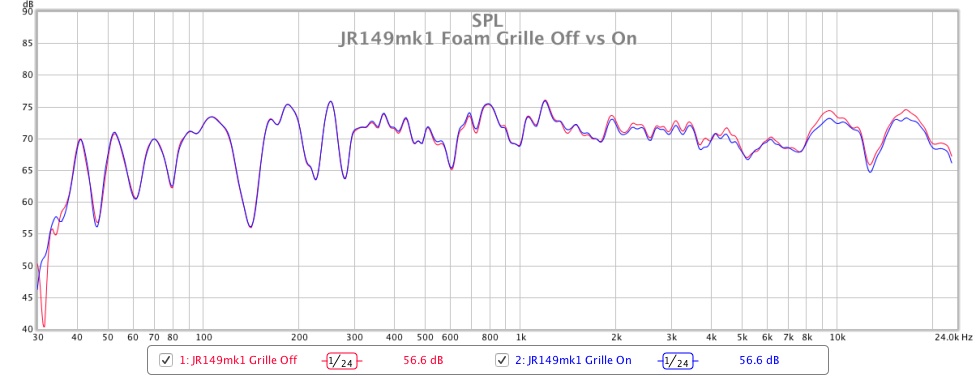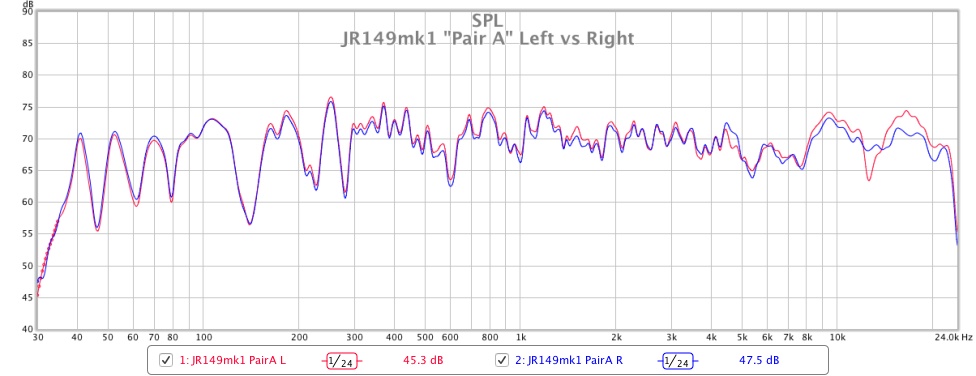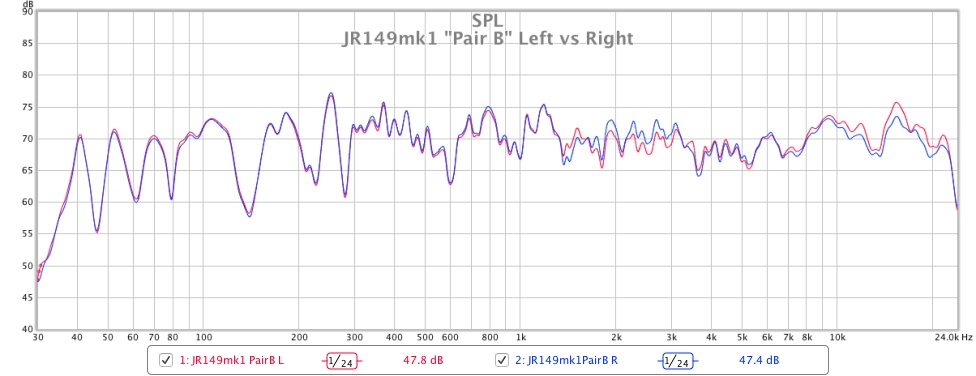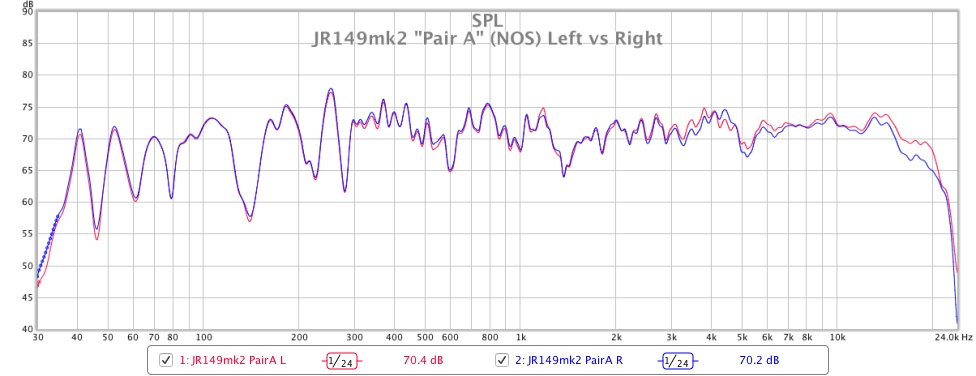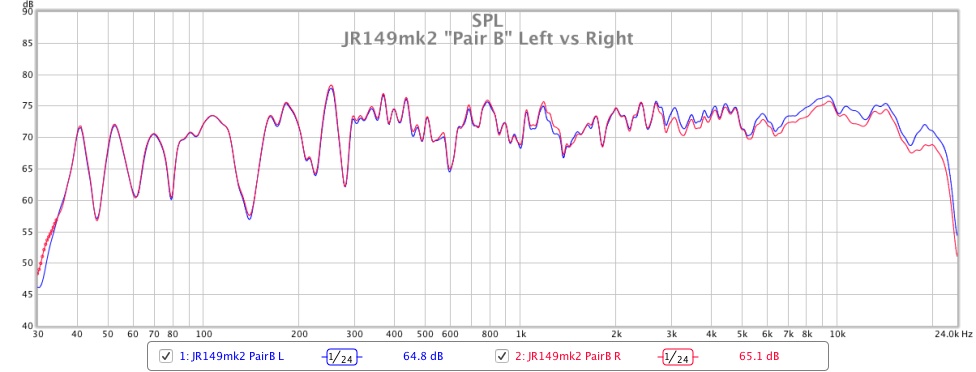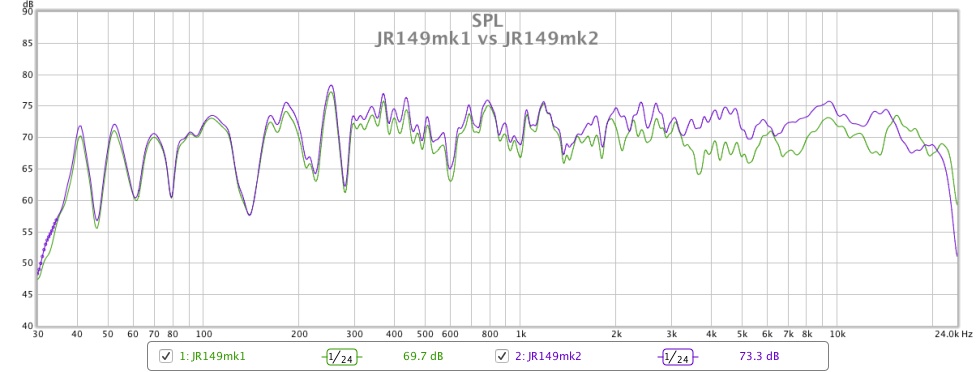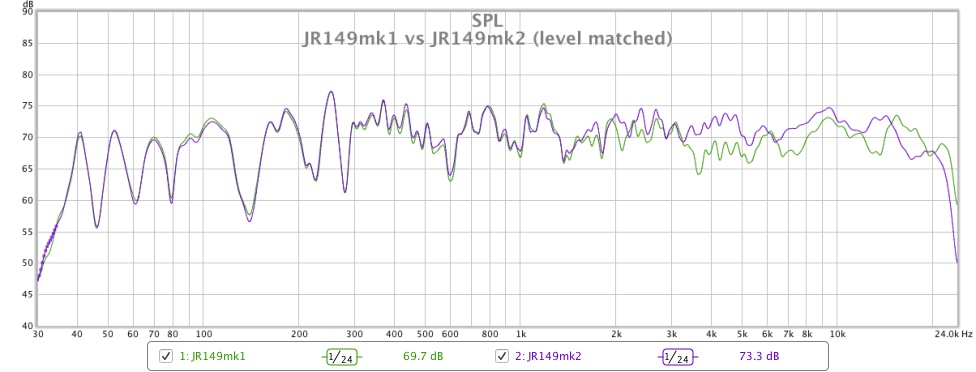ToTo Man
the band not the dog
I spent the evening taking nearfield measurements of my JR149 mk1 vs mk2, as I was curious about their different voicings. Two pairs of each were measured, to broaden the sample and increase the robustness of the results. (In case you missed it, that was my pathetic attempt at disguising the fact that I own too many speakers!  ) . I'll upload the results tomorrow, but to whet the appetite of those who cannot wait, the mk2 is measurably brighter through the upper mids and treble and doesn't have the "BBC-style" presence region dip that the mk1 has. Remarkably, the bass and lower mid response is virtually identical between the two models.
) . I'll upload the results tomorrow, but to whet the appetite of those who cannot wait, the mk2 is measurably brighter through the upper mids and treble and doesn't have the "BBC-style" presence region dip that the mk1 has. Remarkably, the bass and lower mid response is virtually identical between the two models.


